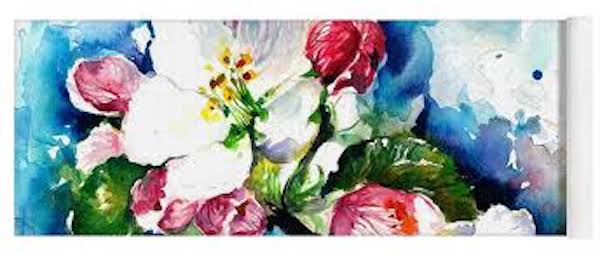Basic Watercolour Techniques. How to Create a Flat Wash.
Learn the watercolour flat wash – a fundamental watercolour technique.
For you to be able to fully learn painting with watercolours, you must have a general understanding with some of the basic watercolour painting techniques. One of the more basic and most common techniques among the many is the flat wash. This is usually employed when a wide area of the canvass needs to be concealed. In this article, I will teach you how to create your own watercolour flat wash.
First thing you’ll going to do is to draw either a square or rectangle on your paper or you can just imagine the margins as you go. Then moisten the section of your canvas where the watercolour wash will be applied. Before you start, make sure to have an adequate amount of water and pigment available by your side. Stretch your paper and make sure to work on a board that is slightly tilt so that your wash won’t drip that fast. The most important part when applying the watercolour wash is the angle where you’ll apply it.
For this technique, use a large brush which holds a good amount of paint and that which covers a wide area. This will help you to get an even wash. Beginning from the top edge of the paper, apply a broad horizontal stroke as if you are drawing a line using a pencil. Remember to not lift your brush until you’re all the way across. You might notice some paint will mount up at the bottom of the stroke you’ve made, do not worry and try not to get rid of this because it is an essential part of the wash.
Add some more paint to your brush and repeat the horizontal stroke you have done but this time make sure that the tip of the brush picks up the accumulated paint at the bottom which was left after the first stripe. Work quickly as you need to lay the next stroke before the paint dries up; otherwise you’ll have lines in your wash and will eventually run down the paper. Continue working this way until you reach the bottom. The result should have a uniform color all over your paper. Squeeze out the excess paint from your brush using a cloth then use the tip of your brush to lift the extra paint from previous stroke. A few of the paints will leak down when it dries up, so don’t worry if your last stroke seems a little lighter than the rest after getting the excess paint.
When you are finish, place the board in a slanting position up until the wash is completely dry because if you won’t, the wet wash might run back up and your wash will dry unevenly as well as ruining the result you want to achieve. Then let your paper dry.
Just a tip when doing any of the watercolour techniques. Use a big mixing bowl or a saucer when you mix the pigment and water. This will prevent you from running out of wash before you finish covering the paper and will allow you to work quickly and avoid the drying of the wash you made.
These are the things you have to know to be able to create your own watercolour flat wash. It’s very easy, you just have to put your heart on to it and in no time you will become an expert and be able to create watercolour masterpieces of your own.
